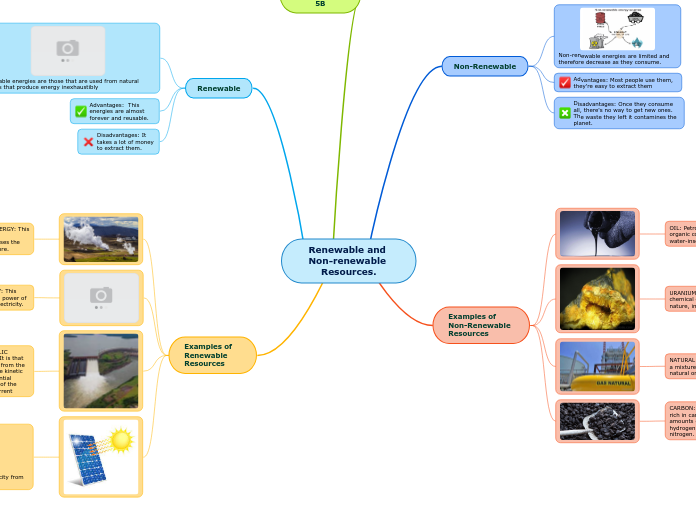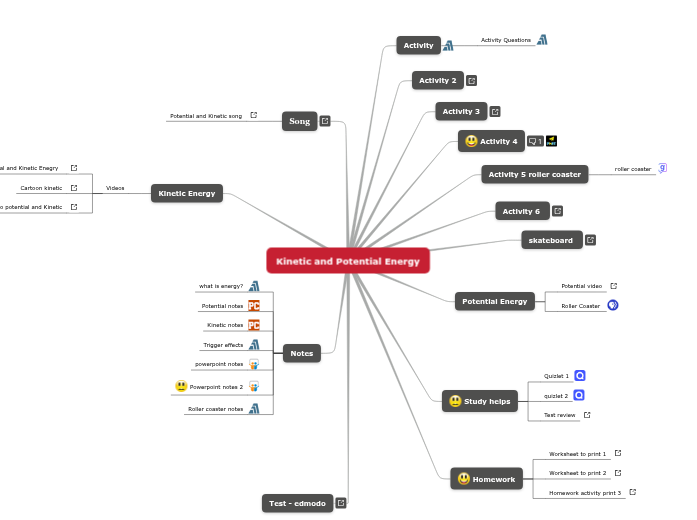DNA Structure, Replication, Expression and Regulation
DNA STRUCTURE
a double helix formed from two complementary strands of nucleotides held together by hydrogen bonds between G-C and A-T base pairs.
DNA strand is used as template strand to create new complementary strand
cytosine, guanine, thymine, adenine
Replication mechanism
monomer
nucleotides
hydrogen bonds connect complementary nucleotides
three major steps
assemply of new DNA segment
priming of template strands
opening of the double helix and separation of the strands
regulation
Membranes,
Energy,
and Cell Communication
Cell membranes
types of membrane transport
active transport
simple passive
selectively permeable
Phospholipids
basic component
phosphate
2 fatty acids
glycerol
cell communication
transduction
second messenger
cyclic AMP (cAMP)
converted to AMP by phosphodiesterase
formed from ATP using Adenylyl Cyclase
two types of receptors
intracellular receptors
membrane receptors
Ion Channel receptor
Tyrosine Kinase receptor
made of two polypeptides which dimerize when a signal molecule is bound to each polypeptide
each polypeptide takes a phosphate group from ATP and adds it to the other polypeptide
called autophosphorylation
G protein linked receptor
steps at reception:
signal molecule binds to GPCR
allows G protein to bind
causes GDP to be replaced with GTP
active G protein activates enzyme
*G protein switch removes phosphate group from GTP to make GDP
sending and receives signals
long distance signaling
hormonal signaling
local signaling
paracrine & synaptic
Energy
it is constantly being changed from one type of energy to another
thermodynamics: the study of energy transformations
second law: every energy transfer or transformation increases the entropy of the universe
entropy (S): measure of disorder
Gibbs free energy (G): helps to predict the spontaneity (or lack thereof) of a reaction at constant temperature and pressure
ΔG=ΔH-TΔS
ΔG>0 implies that ΔStotal<0
ΔG=0 implies that ΔStotal=0
ΔG<0 implies that ΔStotal>0
first law of thermodynamics: energy can be transferred or transformed but it cannot be created nor destroyed
surroundings: matter in the rest of the universe
system: the matter under study
open system
closed system
e.g. photosynthesis: when light energy (kinetic energy)is converted into chemical energy (potential energy) to transform it into glucose
broken up into two stages
calvin cycle
broken up into three stages
RuBP Regeneration
a series of enzymatic reactions driven by ATP
G3P synthesis
synthesizes glucose
carbon fixation
catalyzed by enzyme Rubisco
uses CO2 & chemical energy to synthesize glucose
light reactions
occurs in the thylakoid membrane/space
converts light (photons) & H2O into chemical energy (ATP & NADPH) while producing O2 as a byproduct.
chemical energy will be used to power the Calvin Cycle
ATP: energy currency of the cell
renewable resource regenerated by the addition of a phosphate group to ADP
catabolic reactions in the cell power the phosphorylation of ADP
NADPH: electron donor
6CO2 +6H2O -> C6H12O6 +6O2
products are provided to the mitochondria
goes through cellular respiration
C6H12O6+6O2 -> 6CO2+6H2O+ATP
C6H12O6+6O2 -> 6CO2+6H2O+ATP
products (minus ATP!) are used as reactants for photosynthesis
the ability to do work
it is used, stored, and transformed in living systems
metabolism: the totality of the chemical reactions of an organism's body
chemical reactions can be broken down into two pathways
anabolic
nonspontaneous
endergonic
when simpler molecules are converted into complex molecules, consuming energy
e.g. photosynthesis
catabolic
spontaneous
exergonic
breaking down complex molecules into simpler compounds, releasing energy
e.g. cell respiration
a starting molecule is converted into a product through the used of intermediates
catalyzed by specific enzymes suited for the reaction
enzymes help to lower the energy barrier which reactant need to overcome before they can form products
regulation of enzyme function
allosteric regulation
inhibition of enzyme activity
noncompetitive inhibition: a noncompetitive inhibitor binds to the enzyme away from the active site, changing its shape so that the active site functions much less effectively
competitive inhibition: a competitive inhibitor mimics a substrate, competing for the active site
substrate: the small molecule that an enzyme binds to
binding of a susbtrate forms weak bonds, changing the shape of the enzyme
weak bonds include hydrogen bonds and ionic bonds
active site: where on the enzyme the substrate binds to
Potential Energy
stored energy available to do work
e.g gravitational energy
e.g. chemical energy
Kinetic Energy
energy of motion
e.g. muscle contractions
e.g. light energy
chemical bonds, cell structure and function
Linkage
shared electrons=pair of electrons
the chemical bond is composed by 2 electrons coming from the outer layer of each different atom to make a pair of electronds
chemical bond is a link between 2 atoms to give a molecule
provides energy necessary to form a chemical
strength of the bond depends on the molecules involved in the process of bond formation
biological importance
hydrogen
makes water molecules stick together. responsible of the properties of water.
cause protein chains to spiral and bend, giving unique shapes
ionic
compounds with ionic bonds split into ions in water. Ions conduct electricity. Gives specialized cells excitable properties
covalent
holds together the long chains of macromolecules (DNA, RNA, and Proteins)
Chemical bonds
Glycosidic bond
type of covalent bond that joins a sugar molecule to another group which could be another carbohydrate.
Phosphodiester bond
make up backbone strands of DNA and RNA
this bond is the linkage between the 3" carbon atom of one sugar molecule and the 5" carbon atom of another
these bonds are central to all life on earth
Peptide bond
proteins are linear polymers composed of amino acids linked by a peptide bond
chains containing less than 50 amino acids are peptides
chains containing greater than 50 amino acids are called proteins
peptide bonds are formed by the condensation of the carboxyl group of amino acid and the amino group of the second amino acid with the elimination of water
Metallic bonds
type of bonding found in metallic elements
electrostatic force of attraction between positively charged ions and delocalized outer electrons
refers to an interaction between delocalized electrons and the metal nuclei
Example of metallic bonding: if metal cations and electrons are oppositely charged they will be attracted to each other and also other metal cations
Hydrogen bonds
attractive force between the hydrogen attached to an electronegative atom of one molecule and one from a different molecule
the electronegative atom is usually oxygen, nitrogen, or fluorine.
these have partial negative charges
example of hydrogen bond: a hydrogen atom covalently bonded to an oxygen via a shared pair of electrons
Ion- dipole
attractive forces between polar molecules and ions
Ionic bonds
attraction between ions of opposite charges
complete transfer of valence electrons between atoms
metal loses electrons to become a positively charged cation
non metal accepts these electrons to become a negatively charged anion
example of ionic bond: Na and Cl
Covalent bonds
two types:
nonpolar covalent
evenly matched
polar covalent
unevenly matched, but willing to share
example of covalent bond: two hydrogen bonds getting close together, the attraction is balanced in both directions. Hydrogen gas is formed.
strongest bond: sharing of electron pairs
biological macromolecules
Lipids
not a true polymer
waxes
fatty acids bound to long chain alcohol molecules
functions:
prevention of water loss
protection
steroids
essential for the structure of
animal cell membranes
made up of 4 fused carbon ring structures
triglycerides
a lipid with 3 fatty acid chains
linked to a glycerol molecule
occurs through a dehydration reaction
phospholipids
has two fatty acid chains
otherwise known as the "tail"
hydrophobic
composes all cell membranes
contains a phosphate group
otherwise known as the "head"
hydrophilic
fatty acids
unsaturated
not fully saturated with hydrogens
double bonds
causes kinks in the chain
liquid at room temperature
saturated
saturated with hydrogen
single bonds
able to pack closely together
higher melting points
solid at room temperatue
Carbohydrates
carbon-based molecules hydrated with many hydroxyl groups (-OH)
monomers: monosaccharides
polymers: polysaccharides
types:
complex carbohydrates
starch
composed of alpha glucose molecules
can be digest by humans due to the
amylase enzyme
cellulose
composed of beta glucose molecules
cannot be digest by humans because we
lack the necessary enzyme needed to break it down
simple carbohydrates
most abudant is glucose
C6H12O6
Add your text
bonded through glycosidic linkages
form via a dehydration reaction
Nucleic Acids
monomer: nucleotide
phosphate group
sugar molecule
nitrogenous bases
purines
guanine
adenine
pyrimidines
uracil
thymine
cytosine
polymers:
DNA
forms a double helix
with anti-parallel strands
connected by base-pair hydrogen bonding
sugar molecule: deoxyribose
thymine (T)
RNA
forms a single-stranded nucleotide chain
sugar molecule: ribose
base pairs:
guanine (G)
cytosine (C)
uracil (U)
adenine (A)
has directionality (5' & 3' ends)
bonded through phosphodiester bonds
results in the sugar-phopshate backbone
is formed through dehydration synthesis
also known as condensation reaction
Proteins
monomers: amino acids
20 different amino acids are used by living organisms
protein polymers
Structure and Organization
Quartenary: arrangement of multiple polypetide chains to form a protein
Tertiary: 3D-shape of polypeptide chain
determined by R group interactions
Secondary: formation of α helices or β pleated sheets
occurs due to the formation of hydrogen bonds
Primary: types, quantity, and sequence of amino acids
has directionality (N- terminal & C-terminal ends)
bonded through peptide bonds
cells
chemical evolution hypothesis
three domains of life
archaea
methanogens live in swamps and produce methane as a waste product
strict anaerobes
extreme thermophiles: very hot environments
extreme halophiles: live in saline environments
branched membrane lipids
eukaria
made up of eukaryotes
most of the DNA is in the nucleus
nucleus is an organelle that is bounded by a double membrane
cells have membrane bound nucleus
bacteria
c
DNA in nucleoid
no membrane bound organelles
membranes
membrane proteins
functions
attachment to ECM an cytoskeleton
intercellular joining
cell-cell recognition
signal transduction
enzymatic actvity
transport
active transport
specific case of active transport is the sodium-potassium pump
uses energy
maintains a concentration gradient
movement of substances from low to high concentrations
passive transoport
facilitated diffusion
passive transport aided by proteins
example includes osmosis
water balance of cells
hypotonic
solute concentration is less than that inside the cell; cell gains water
hypertonic
solute concentration is greater than that inside the cell; cell loses water
isotonic
solute concentration is the same as inside the cell; no net water movement across the plasma membrane
tonicity
ability of a surrounding solution to cause a cell to gain or lose water
diffusion of a substance across a membrane with no energy investment
membrane fluidity
Each phospholipid has a specific temp
temp affects the fluidity
below temp lipid is in gel phase and is rigid
above temp lipid is in liquid crystalline phase and is fluid
plasma membrane
regulate cell's tarffic
consists of phospholipid bilayer that is semipermeable
hydrophobic fatty acid tail (away from water) and a hydrophilic head (faces water)
hydrophilic becuase of phophate group
amphipathic
cholesterol
no nucleus
membrane transport
Phospholipids and proteins
make up most of the membrane
cholesterol helps with flexibility and carbohydrate chains help communicate with other cells
phospholipid: 2 fatty acid tails and a phosphate head
phospholipid bilayer forms because the inside and outside of the cell are mostly water
semipermeable because it only allows certain molecules to cross
Hydrophilic, polar, large and charged molecules must use a transport Protein to enter/exit the cell.
transport proteins
There are two types of Transport Proteins: �Protein Channels: a special entryway for large, polar, hydrophilic and charged ions to diffuse through the cell membrane�This is called Facilitated Diffusion.
The proteins are specific; glucose can only pass through a glucose transport protein.
The fluid mosaic model
the membrane is made up of many smaller parts and the structure moves likes a fluid
Semipermeable membranes
membranes that allow certain materials to pass through based on certain properties
size, hydrophobicity, charge
The cell boundary
seperates cellular materials from external environment
regulates which materials can enter and exit the cell
maintains homeostasis in cell
membranes are found around the cell and each organelle









